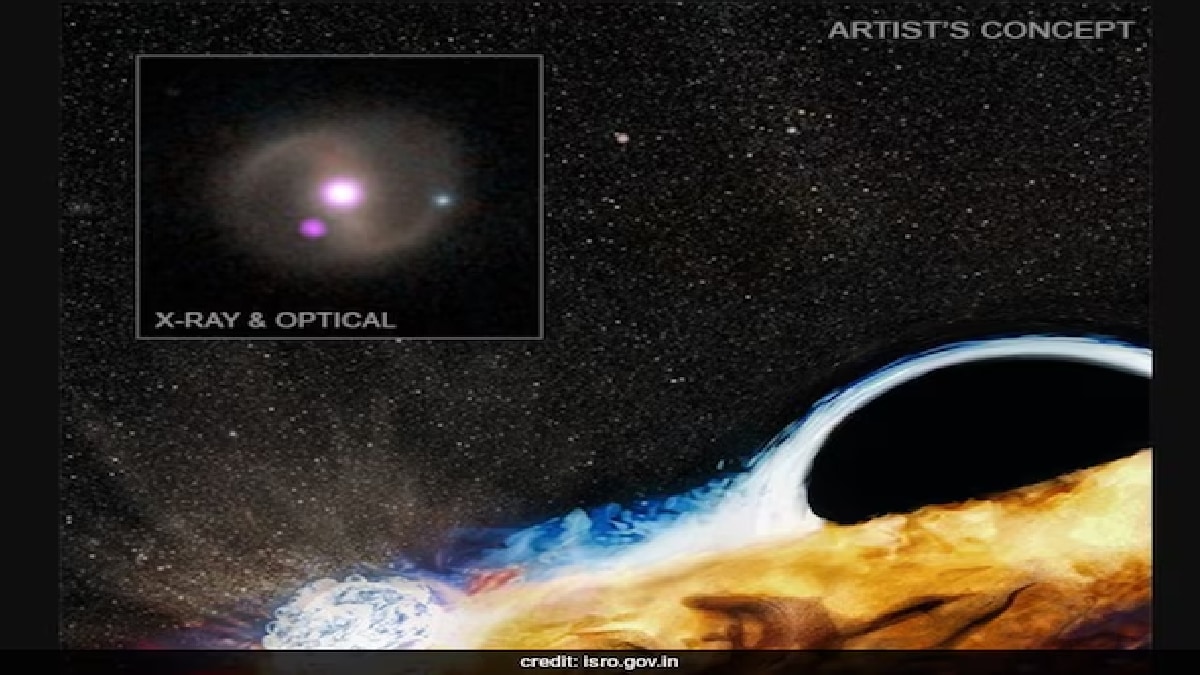Remarkable Discovery: Giant Black Hole Influences Celestial Bodies
Space scientists have made an astonishing discovery about a giant black hole that is dramatically impacting two celestial bodies – one of which is a star. This groundbreaking research was conducted collaboratively by several NASA observatories, including Chandra, NICER, and Hubble. Notably, India’s AstroSat has also played a pivotal role by providing vital information about the cosmic remnants surrounding the giant black hole.
The Tidal Disruption Event
In 2019, astronomers first discovered that the remnants of a star were being affected by this black hole. The black hole’s immense gravitational force had shredded the star into pieces, a phenomenon known as a tidal disruption event (TDE). As the star disintegrated, its fragments formed a stable, disk-like structure around the black hole that persisted for several years. Recently, space scientists have observed something truly extraordinary regarding this disk.
Interaction With a Second Celestial Object
The disk surrounding the black hole has begun to interact with another celestial object, which could either be a star or a smaller black hole that was previously orbiting safely at a distance. Now, this object is colliding with the debris-filled disk every 48 hours, resulting in the emission of a large amount of X-rays. According to astronomer Matt Nicholl from Queen’s University Belfast, this interaction can be likened to a diver repeatedly leaping into a pool and splashing water each time.
Continuous Eruptions and Gas Clouds
This secondary celestial body behaves like a diver jumping into the disk, causing not only the release of X-rays but also generating clouds of gas repeatedly. While astronomers have extensively studied TDEs—characterized by the singular destruction of a star by a black hole—another intriguing phenomenon has emerged known as Quasi Periodic Eruptions (QPEs). These are bright flashes of X-rays that radiate from the centers of galaxies at regular intervals. However, more research is needed to fully understand this mysterious behavior.
Conclusion
The interaction between the giant black hole, its debris disk, and the nearby celestial object presents exciting opportunities for further astronomical research. As scientists continue to unravel the complexities of these cosmic events, they could unlock new insights into the behavior of black holes and their effects on surrounding celestial bodies.
Key Takeaways
| Key Discovery | Description |
|---|---|
| Giant Black Hole | Influences a star and debris disk through powerful gravitational forces. |
| Tidal Disruption Event (TDE) | Process where a star is torn apart by the black hole’s gravity. |
| Quasi Periodic Eruptions (QPE) | Bright flashes of X-rays occurring at regular intervals, still not fully understood. |
| Collisions | Another celestial object interacting with the debris disk, emitting X-rays every 48 hours. |









